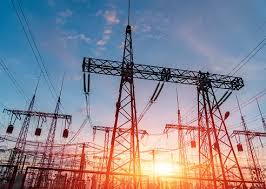
In Nigeria, where unreliable electricity is a daily challenge for many, alternative power sources have become essential for daily life rather than just a convenience. With frequent power outages and unstable grid performance, the demand for dependable and sustainable energy solutions is more pressing than ever.
There are various alternatives that Nigerians can turn to in order to maintain power for their homes and businesses when the national grid fails. From utilizing the country’s plentiful sunlight to investigating wind and other renewable energy options, these solutions offer promising ways to ensure a stable energy supply despite ongoing grid issues.
1. Solar Power
With Nigeria enjoying approximately 7 hours of sunshine each day, solar power stands out as a highly feasible option. By investing in solar panels, individuals and businesses can tap into a clean and sustainable energy source, ensuring a reliable power supply even when the national grid is unreliable.
2. Wind Power
Nigeria’s coastal areas experience wind speeds that are ideal for harnessing wind energy through turbines. This makes wind power a viable option for generating electricity in these regions, offering a renewable and effective alternative to traditional energy sources.
3. Hydroelectric Power
With numerous rivers and streams across Nigeria, hydroelectric power presents a promising option. By harnessing the flow of these water sources, it is possible to generate electricity and decrease the country’s dependence on fossil fuels.
4. Biomass Energy
Biomass energy offers a sustainable solution by converting organic waste into electricity. This method provides an eco-friendly alternative to conventional energy sources and helps manage waste effectively.
5. Geothermal Energy
Nigeria’s geothermal resources offer a promising way to generate electricity through the Earth’s natural heat. This approach provides a reliable and renewable energy source, helping to decrease the country’s reliance on fossil fuels, combat climate change, and support sustainable energy solutions.
6. Kinetic Energy
Harnessing kinetic energy from moving elements such as rivers, oceans, or even traffic can be an innovative method for electricity generation. This technology captures the energy from motion to produce power.
7. Thermoelectric Power
Thermoelectric power involves converting waste heat from industrial processes, engines, or even body heat into electricity. This method maximizes energy efficiency by utilizing heat that would otherwise be wasted.
8. Piezoelectric Power
Piezoelectric power leverages materials that generate electricity from vibrations, movements, or pressure. By converting mechanical energy into electrical energy, this technology offers a unique way to harness power from everyday activities and environmental factors.
9. Animal-Powered Generators
Animal-powered generators convert the movement of animals into rotational energy, akin to how a bicycle pedal works. This system harnesses the physical effort of animals to generate electricity, providing a practical and renewable energy solution.
10. Micro-Hydro Power
Micro-hydro power involves using small-scale hydroelectric systems to generate electricity from low-velocity water flows. This approach is ideal for localized energy production, utilizing smaller water sources to create sustainable and efficient power.





